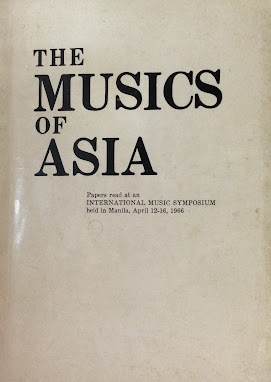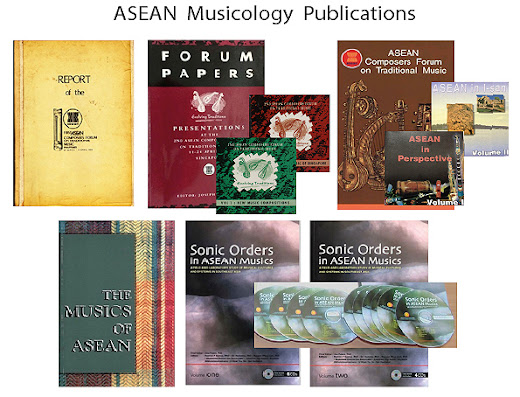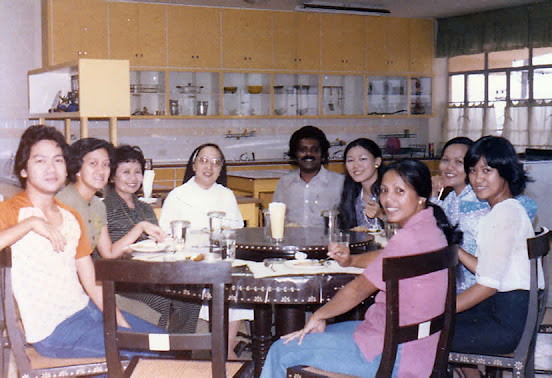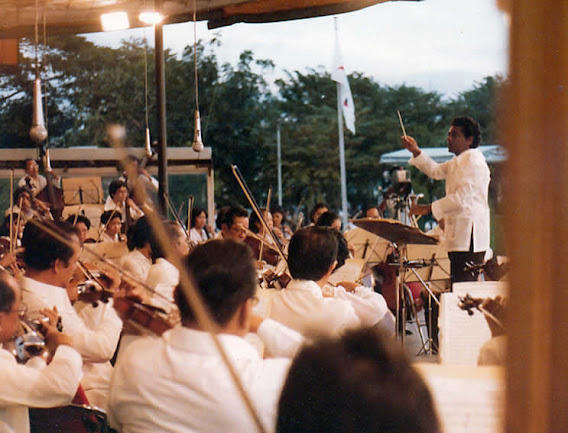Dr. Tran Van Khe
+ DATE OF BIRTH : July 24th 1921
+ PLACE OF-BIRTH : Binh Hoa Dong, Mytho (Tien Giang) (Viet Nam)
+ NATIONALITY : Vietnamese,
CURRICULUM VITAE
* PRESENT POSITION :
- Ex-Director of research in the French National Center for Scientific Research (1960-1989)
- Ex-Professor of Ethnomusicology, University of Paris Sorbonne (1966-1989)
- Member of the "Board of Directors" of the Unesco-IMC Project : The "Universe of Music, A History" (UMH)
- Ex-Chairman of the Scientific Board of the International Institute for Comparative Music Studies and Documentation (Berlin)
- Honorary Member of the IMC Internatioal Music Council (Unesco)
- Honorary Member of the ICTM Internatioanal Council of Traditional Music
- Corresponding member of the European Academy of Sciences, Letters and Arts
Professor of Vietnamese Traditional Music, Special Adviser of the Scientific Board, Private University of Binh Dương, Province of Binh Dương 9 Viet Nam)
Member of the Scientific Board of the Institute of Musicology of VietNam
+ EDUCATION
- 1958 : Ph.D. University of Paris-Sorbonne Dissertation : Vietnamese Traditional Music
- 1951 : Diplome de I'lnstitut d'Etudes Politiques de Paris (Sciences-Po : International Relations) (Institute of Political Studies)
- 1943 : First Certificate of Medicine (Medical College : University of Hanoi)
- 1942 : Certificate of P.C.B. (Physics- Chemistry-Biology) University of Hanoi
- 1941 : Baccalaureat (Philosophy) Saigon
- 1940 : Baccalaureat (First Part) Saigon
Music Education : Belongs to a family of musicians : 4th generation, training in traditional musical instruments and drumming since his childhood in the family.
Musicology : Institut de Musicologie de Paris (1954-1958) Paris Institute of Musicoloby.
Working EXPERIENCE
* Research and teaching
- 2014 : Adviser for the Vietnamese students preparing thesis or dissertation on Vietnamese traditional music or theatre
- 2004 : (from May 17 to June 9) Workshop : “New methods of teaching Vietnamese Traditional Music to the children of the primary schools” organised and directed by myself with the collaboration of the Department of Culture and Information Ho Chi Minh city; College of Art and Culture HCM City, Primary school Tran Hung Dao( HCM City) and with a special grant from UNESCO through Mrs Teresa Wagner
- 2003- Since 2003 up to the present time, I have actively, participated in the cultural life of the whole VietNam.
I attended the Symposium on Court Music in Viet Nam organised by the Center for the Preservation of Hue relics, and together with Mrs Noriko Nakamura from Unesco, have helped the Vietnamese scholars to achieve the file on Nha Nhac, Court Music in Hue to be presaentesd to Unesco for the nomination as a master piece of Oral and Intangible Heritage of Humanity. In 2003, Nha Nhac Hue Court Music was recognized by Unesco as a masterpiece of Oral and intangible Heritage of Humanity. The Vietnamese Ambassador near Unesco, organised a series of concerts in France and in Belgium to introduce Vietnamese Nha Nhac to the European audience and asked me to be the MC of those concerts. I accepted the proposal and was happy to do that work.
In 2005, I was invited by the Minister for Foreign Affairs, and the Minister of Culture and Information of the Vietnamese Government to be a special adviser, to help the Vietnamese specialists to prepare a file on the Ca Tru (special vocal art of North VietNam).
At the same time, UNESCO invited me to write an evaluation of the file on Gongs on the High Plateaux in VietNam.
I compared the Gongs ensembles from VietNam with the gamelan from Java the Gong from Bali, the Kulingtan from the Philippines and finally proposed Unesco to recognized the “Cultural area of gongs from the High Plateaux in VietNam” as a masterpiece of an oral and untangible heritage of Humanity.
I had been for several years, from 2006 to the present time a special adviser of the scholars in charge to prepare the file of Quan ho from Bac Ninh, of the Ca tru.
Recently, I played an active part in the preparation of the file on the Don ca tai tu from Nam bộ (South Vietnam).
The People Committee of Ho Chi Minh city, to thank me on my presentation of Vietnamese traditional Music and particularly of the Don ca tai tu (entertainment music from the south) throughout the world gave me the title of “Emerite citizen” of Ho Chi Minh city and the sum of thirty millions of Vietnamese đồng.
-1999 : Professor of Vietnamese Traditional Music at the Private University of Hung Vuong until 2003.
- 1989 : (January-March) Visiting Professor, University of the Philippines, Quezon City, Manila
- 1988 : (January-Septemter) Fulbright Scholar, Visiting Professor University of Hawaii at Manoa (USA)
- 1985 : Visiting Professor at the University of Western Australia, Perth
- 1984-1987 : Director of a Seminar on "Ecole des Hautes Etudes en Sciences Sociales (EHESS) ( School of High Studies on Social Sciences) Paris
- 1983 : Visiting Professor at University of Hawaii at Manoa : Summer Course (USA)
- 1981 and 1979 : Visiting Professor at Listz Academy of Music, Budapest Hungary.
- 1979-1977 : Guest Professor at the “Intercultural School” - in Venice, ltaly
- 1975-1985 : Guest Professor at the Institut Catholique de Paris Liturgic Music : Buddhist Music in Vietnam (Paris Catholic Institute)
- 1973 : Visiting Professor at The Faculte de Musique, University of Montreal, Canada (Music College)
- 1972 : Guest Professor at the University of Southern Illinois Carbonda1e, USA
- 1968 : Guest Professor at the UCLA, (University of California, Los Angeles) Los Angeles, USA
- 1966-1988 : Lecturer, Professor, University of Paris-Sorbonne
Ethnomusicology, Adviser for Students preparing Master's thesis and Doctoral dissertations on Asian Music (more than 40 students)
- 1959-1988 : Professor, Directeur d'Etudes, and President of the "Centre d'Etudes de Musique Orientale" (Professor. Director of Studies and President of the Center for Oriental Musics Studies, Paris),
- 1960-1988 : Researcher in Musicology, French National Center for Scientific Research (Paris France)
- 1960-64 : Attache de recherche (Beginner Researcher)
- 1964-68 : Charge de recherche (Confirmed Researcher)
- 1968-72 : Maitre de recherche (Master of Research)
- 1972-88 : Directeur dc recherche (Director of Research)
- 1977-1987 : Every year Visiting Professor at The Institute of Musicology in Viet Nam
Several hundreds of lectures on Asian Music and on Methodology in Ethnormusicology, in several Universities in the world, namely Berkeley, Maryland, Baltimore County USA, (1988) Central Conservatory of Beijing, (People's Republic of China 1987), Antatanarivo, Madagascar (August 1985), Kunitachi College, Japan (July1985), Wellington, New Zealand / November 1984), Venice, Italy (March 84-April 85) Harvard, USA (June 1982) Conservatory Tchaikovsky, Moscow, USSR/May 81) National Institute of Music of Algeria (August 1980), National Center for the Performing Arts, Bombay, India (Sept. 1979), Teheran, Iran (June 1976) Conservatory of Saigon, Buddhist University of Van Hanh, Catholic Institution Taberd, Centre Culturel Francais, VietNam-USA Association, (South VietNam August 1974), Sau Paulo, Brasil (July 1974) Shiraz .lran (August 1972) Sangeet Natak Akademi, Nev Delhi India (May 1961), Traditional Musicians Association, TaiPei, (April 1961) Ueno University, Japan (April 1961).
- Member of Societe Francaise de Musicologie (French Society of Musicology)
- International Musicologlcal Society
- French Society for Ethnomusicology
- Society for Ethnomusicology (USA)
- Society for Asian Music
- International Society for Music Education
- Societe des Gens de Lettres (France) (Society for Writers )
- International Folk Music Council (and after 1983)(IFMC)
- International Council for Traditional Music (Ex-Vice President now Life Honorary Member) ICTM
- International Music Council (Ex-Vice President, now Life Honorary Member)
PUBLICATIONS
- 27 records
- 1 film on Indian Dhrupad singing tradition, 4 tapes on Asian Music (GRM Groups de Recherche Musicale French Radio)
- 4 video tapes on the Chinese Sheng (mouth organ), Qin (Chinese 7 stringed board zither), Vietnamese Dan Tranh (16 stringed board zither) Audio Visual Center University Dauphine (France)
- 4 books on Vietnamese Traditional Music (in French, German. And Italian languages)( Europe)
- 1 book on Water puppets in Viet Nam (Paris-France)
- About 200 articles (in French, English languages) on Asian Music, Vietnamese Music, and musicological matters. (Europe mainly France)
- 14 books, 140 articles (in Vietnamese) on autobiography, researches on Vietnamese traditional music and musicological matters (S.R of VietNam)
INTERNATIONAL CONFERENCES
Has participated in more than 180 Internatinal Congresses, Conferences, Symposia, and Music Festivals. (The list of publications and the International Conferences was given to Prof. Chen Zi Ming in April 2014))
Participating international organs : Member of more than 10 Associations of Musical Studies in France, USA and many other European and Asian countries. Member of Standing Board and Vice President of the International Council of Traditional Music and the International Music Council (UNESCO). Significantly contributing to various works to research, publish and publicize major traditional music in Asia, especially Vietnamese, organized by the International Center for Comparative Music Studies and Documentation (Berlin) as a member, and for 8 years as Chairman of the Scientific Council. Since 1988, life honorary member of the International Music Council (UNESCO). Special advisor for the Council in subjects related to traditional music of Asian countries. Ex Vice President of the ICTM and now Life Honorary Member
Especially I shall stress on my activities as a member of the IFMC(Internatioa, Folk Music Council) and later ICTM.(International Council of Traditional Musics)
In 1987 Prof Kishibe Shigeo and I suddently saw no longer our names on the list of the members of the executive committee without receving any notification about that.
In 2013 Life Honorary Member of the ICTM
INTERNATIONAL CONFERENCES
Has participated in more than 180 International Congresses, Conferences, Symposia, and Music Festivals. (The lists of publications and International Conferences were given to Prof Chenziming in April 2014)
PERSONAL AFFILIATIONS
- Member of French Musicological Society
- International Musicological Society
- French Ethno Musicological Society
- Asian Music Society
- International Society for Music Education
- International Council for Traditional Music (Ex-Vice President, now Life Honorary Member))
- International Music Council (Ex-Vice President, now Life Honorary Member)
* DISTINCTIONS- SCHOLARSHIPS
- 2013 Bagde of Ho Chi Minh City (Emerite citizem of Ho Chi Minh city)
- 2011 Phan Chau Trinh Award (VietNam)
- 2011 San Francisco – Ho Chi Minh City City Sister : Life Time Award in Vietnamese Tradionnal Music (USA-VietNam)
- 2005 Đao Tan Award (VietNam)
- 2003 Glory of Vietnam
- 1999 French Chevalier de l’Ordre des Palmes Academiques
- 1999 Medal of Labor (First Class) (S.R of Viet Nam)
- 1999 Doctor (HC) in Ethnomusicology, Moncton University (New Brunswick - Canada)
- 1994 Koizumi Fumio Ethno musicological Prize (Japan)
- 1995 Correspondent Member of The European Academy of Sciences, Arts, and Letters
- 1991 Officier de l’ordre des Arts et des Lettres (France) Medal of Arts and Letters French Government)
- 1988 Full Bright Scholarship (USA)
- 1985 Japan Foundation Scholarship
- 1981 UNESCO IMC Music Award
- 1975 Doctor in Music (honor) - University of Ottawa (Canada)
- 1974 1st Class Medal of Letters and Arts (Republic of Viet Ham)
- 1974 1st Class Medal of Culture (Republic of Viet Nam)
- 1970 Grand Prize from French Music Academy of French Records Record : VIET NAM 1. BM LD 2022 (Paris. France)
- 1969 Schallplatten Prize for Record VIET NAM 1. BM LD 2022 (Germany)
- 1960 Grand Prize from French Music Academy for the Record of : La Bo De - Musique NOLD 565 (Paris-France)
- 1949 2nd Prize of the International Competition on Folk Music Instruments ; in the Youth Festival of Budapest in Hungary.

















































